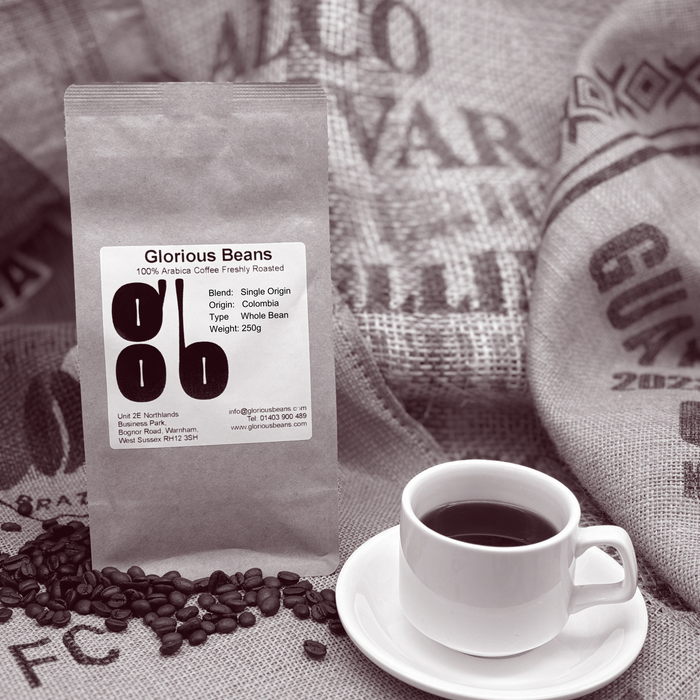Coffee Beans Uncovered: Uncovering the Keys of Espresso and Blended Coffee Beans
When you think of coffee, what enters your mind? Is it the rich aroma of espresso or the complexity of a well-crafted blend? Understanding the nuances of coffee beans can change your experience. Each variety, from Arabica to Robusta, holds its own secrets. As you discover even more, you'll uncover exactly how these beans form tastes and impact sustainability. What might you discover regarding your next mug?
The Origins of Espresso: A Historical Perspective
Although coffee is currently a staple in coffee culture worldwide, its origins trace back to the early 20th century in Italy. In 1901, Luigi Bezzera patented the first coffee equipment, aiming to make coffee faster than conventional techniques.
Recognizing Espresso Beans: Selections and Features
When you think of espresso, it's vital to identify the various bean ranges and their distinct flavors. Each kind brings a distinctive personality to your mug, affected by aspects like roast levels. Comprehending these elements can boost your espresso experience considerably.
Coffee Bean Varieties
As you explore the world of espresso, you'll promptly find that not all beans are created equal; each range brings its very own unique flavors and attributes to your mug. One of the most preferred types consist of Arabica and Robusta. Arabica beans are known for their smooth, nuanced flavors and lower high levels of caffeine web content, making them a favored amongst coffee connoisseurs. On the various other hand, Robusta beans pack a more powerful punch with higher caffeine and a more bitter preference, often preferred in blends for their crema-enhancing top qualities. You might likewise come across specialty beans like Liberica and Excelsa, which offer distinctive accounts and are less common. Each selection provides something various, so trying out will help you discover your best coffee.
Flavor Profiles Clarified
Understanding the flavor profiles of various espresso beans can boost your coffee experience. Each bean selection uses distinct qualities that affect preference, fragrance, and mouthfeel. For example, Arabica beans often offer a sweeter, much more complex flavor with tips of fruit and flower notes, while Robusta beans often tend to be bolder, with nutty and earthy touches.
When you check out single-origin beans, you could discover distinct regional tastes-- Main American beans may be intense and citrusy, whereas Italian blends typically supply abundant, chocolatey notes.
Roast Levels Effect
Roast degrees play an essential duty in forming the flavor and aroma of espresso beans, influencing your general coffee experience. Comprehending these roast degrees assists you select the espresso that fits your preference preferences. Trying out with various roasts can lead to fascinating discoveries, enhancing your recognition for coffee.
The Art of Blending: What Makes Blended Coffee Unique
What makes blended coffee so remarkable? It's everything about the art of integrating beans from different beginnings, roast levels, and taste accounts. You're not simply blending; you're developing a harmonious balance that highlights the staminas of each bean when you mix. You can trying out numerous combinations to improve level of acidity, body, and sweet taste, leading to a mixture that's richer and a lot more complicated than a single-origin coffee.
Blending likewise permits you to accommodate diverse taste preferences. You can craft a blend that's smooth and smooth or one that's vibrant and durable, relying on your audience. Plus, mixing can help preserve consistency, providing a trustworthy flavor experience regardless of seasonal variants in beans. So, whether you're a home or a barista brewer, understanding the art of blending opens a globe of imagination and taste opportunities, making your coffee experience genuinely unique - SOE.
Flavor Accounts: Tasting Notes of Coffee vs. Blended Coffee
Blended coffee provides a world of taste possibilities, yet when it comes to coffee, you're looking at an extra focused experience. Coffee generally showcases strong, abundant tastes with a thicker mouthfeel.
On the other hand, blended coffee provides an intricate tapestry of flavors. You can check out a selection of sampling notes, from wonderful and nutty to flower and fruity. Each mix can use something distinct, frequently integrating beans from different areas to develop a well balanced account.
While coffee supplies a punch, mixed coffee welcomes you to appreciate the subtleties. Whether you like the robust stamina of espresso or the detailed tastes of combined coffee, each cup tells its own story, awaiting you to find.
Brewing Techniques: Refining Your Espresso Shot
To achieve the perfect coffee shot, understanding the brewing methods is vital, as also small adjustments can substantially impact the taste and quality. Begin by utilizing fresh, high-grade coffee beans; grind them prior to developing for maximum flavor. Objective for a fine work, regarding the consistency of common salt, to guarantee optimal removal.
Next, take notice of your water temperature level; it should be in between 195 ° F to 205 ° F. Too warm or too chilly can destroy your shot. Usage concerning 18-20 grams of coffee for a double shot, and tamp it evenly with firm pressure to create SOE an uniform puck.
Ultimately, regulate your removal time; objective for 25-30 seconds. A longer extraction can bring about anger, while as well brief can result in sour tastes. Practice these methods regularly, and you'll refine your skills, achieving that abundant, robust coffee shot you long for. Enjoy the journey!
The Function of Roast Degrees in Espresso and Blended Coffee
After understanding the brewing methods for coffee, it's time to ponder exactly how roast levels affect the taste profile of your coffee. Light roasts tend to highlight the coffee's origin, providing brilliant acidity and fruity notes, while medium roasts equilibrium level of acidity and sweetness, producing a well-shaped flavor.

Checking Out Sustainability: Ethical Sourcing of Coffee Beans
When you choose coffee, you're not just selecting a flavor; you're making an option regarding the effect on farmers and the environment. Comprehending Fair Trade practices, natural farming techniques, and accreditation requirements can assist you sustain lasting coffee sourcing. Let's explore how these factors add to a much more ethical coffee experience.
Fair Trade Practices
Fair Profession techniques play a necessary role in making sure that coffee beans are sourced morally and sustainably. When you pick Fair Profession coffee, you sustain farmers that obtain fair wages and work in secure problems. By choosing for Fair Trade brand names, you're not just delighting in a rich mug of coffee; you're making a positive influence on the lives of those who grow it.
Chemical-free Farming Approaches
As you check out the world of ethical coffee sourcing, natural farming methods become a vital element of sustainability. By selecting natural coffee, you support techniques that focus on dirt health, biodiversity, and natural ecosystems. Farmers avoid artificial chemicals and fertilizers, counting rather on natural compost and plant turning to enhance soil fertility. This not only safeguards the environment but likewise improves the high quality of the coffee you enjoy. Chemical-free farming urges local wildlife and advertises a balanced environment, minimizing the chances of disease and parasites. Additionally, it often brings about more powerful, healthier coffee plants, leading to richer flavors in your mug. You're making a mindful option that benefits both the planet and your taste buds. when you decide for natural coffee.
Accreditation Criteria Explained
Understanding certification criteria is essential for any person thinking about fairly sourced coffee. These requirements, such as Fair Trade, Jungle Partnership, and USDA Organic, warranty that coffee is expanded under sustainable practices. You support farmers that adhere to honest labor practices and environmental defense. when you pick certified coffee.
Fair Trade certification concentrates on providing reasonable wages and working problems, while Rainforest Alliance stresses biodiversity and ecosystem conservation. USDA Organic guarantees that no synthetic plant foods or pesticides are used. By familiarizing on your own with these accreditations, you can make informed selections that straighten with your worths. Following time you're at your regional café or grocery shop, try to find these tags, and really feel great knowing your coffee acquisition favorably influences areas and the setting.
Frequently Asked Concerns


How Does Elevation Influence the Growth of Coffee Beans?
Elevation impacts coffee bean growth by influencing temperature and climate. Higher elevations commonly create denser beans with even more complicated tastes, while reduced elevations can cause faster development yet less savory end results. You'll taste the difference!
What's the Distinction In Between Arabica and Robusta Beans?
Arabica beans are sweeter and more intricate, while Robusta beans have a stronger, harsher flavor with greater caffeine material. You'll locate Arabica favored for specialized coffees, whereas Robusta's usually used in immediate coffee and coffee blends.
Can Coffee Beans Spoil or Shed Taste Gradually?
Yes, coffee beans can spoil and shed taste over time. They'll end up being stale if you save them poorly or keep them as well long. Constantly keep your beans in a closed container away from light and moisture.
What Are the Health Perks of Alcohol Consumption Espresso?
Drinking coffee boosts your power, enhances psychological clearness, and might decrease the threat of particular conditions. It's rich in anti-oxidants, sustains metabolic rate, and can improve state of mind, making it an advantageous choice for your day-to-day regimen.
How Does Water Quality Effect Coffee Extraction?
Water quality greatly impacts coffee removal. It impacts the solubility of oils and tastes, affecting preference and aroma. Making use of filtered water can boost your espresso, making sure a well balanced and satisfying cup every single time you make.
Coffee Beans Uncovered: Finding the Secrets of Coffee and Blended Coffee Beans.
Understanding the taste profiles of various coffee beans can boost your coffee experience.Roast degrees play a necessary role in forming the flavor and fragrance of coffee beans, affecting your total coffee experience (SOE).Blended coffee provides a world of flavor opportunities, but when it comes to espresso, you're looking at a more focused experience.After grasping the developing strategies for espresso, it's time to ponder exactly how roast degrees influence the taste profile of your coffee